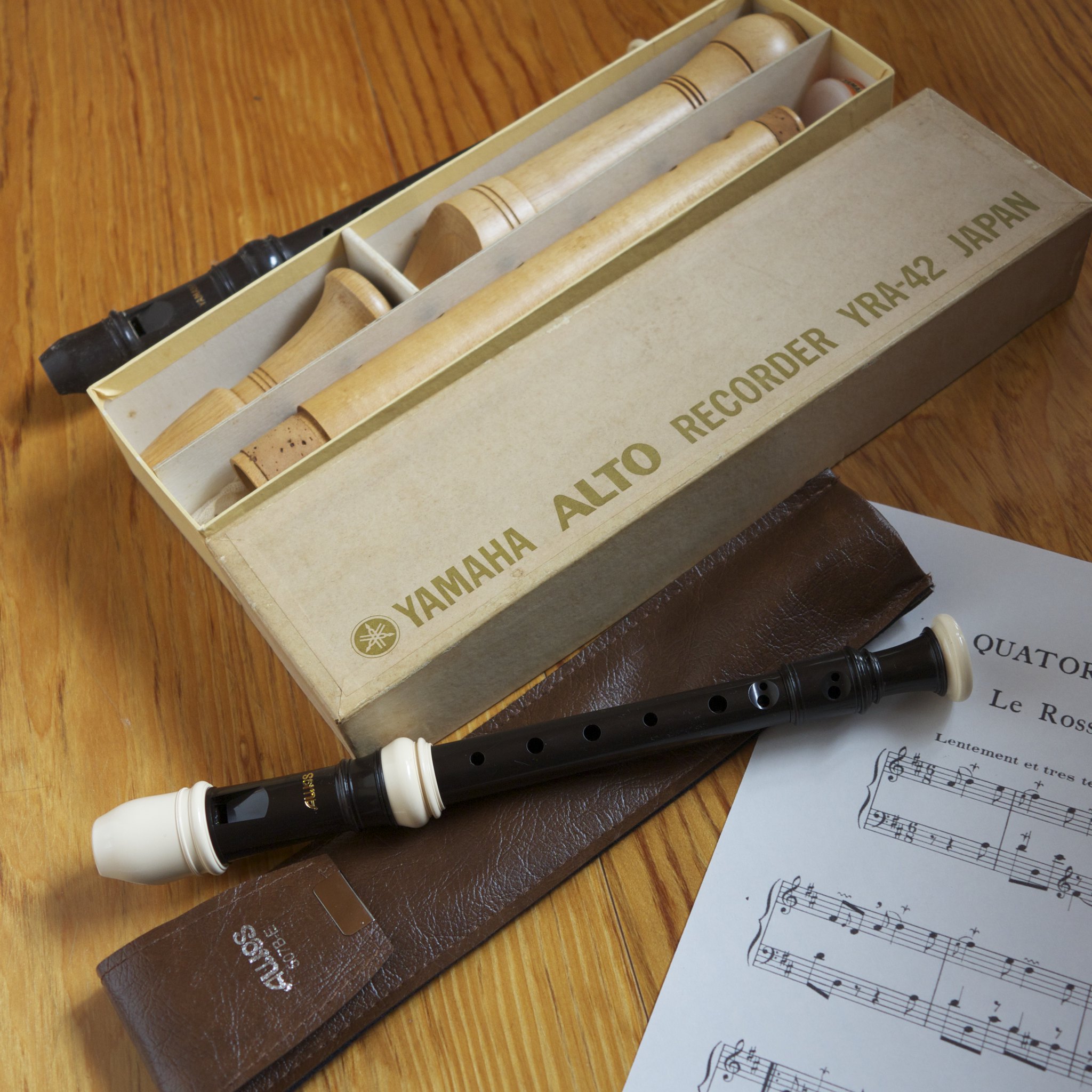Embouchure is the way you put your mouth against the instrument. In particular, flute embouchure is how you blow into the tone hole, and how you rest your lips on the lip plate.
To learn more about embouchure for flute, read on!
How To Blow Into a Flute
Here are some general tips on flute embouchure as you practice or perfect your own playing!
- Practice with a mirror
- Try and keep your embouchure stationary
- Keep a flat tongue
When you use a mirror when you’re focusing on your embouchure, you’ll be able to watch the condensation that forms on the other side of your headjoint. If the condensation makes a triangle, you are most likely getting a rich and full sound. If you see condensation but no triangle, keep adjusting your embouchure until you see a more defined shape!
By moving your embouchure as little as possible, you will maximize your ability to switch quickly between notes. While the aperture of your embouchure may become more wide or small, you will be able to play technical passages with more ease the less you move your embouchure.
You might be wondering: what does my tongue have to do with my embouchure? Well, let me tell you! Your tongue, since it interacts with your instrument’s headjoint, is actually part of the embouchure. The flatter you keep your tongue, the clearer tone you get from your flute. If placed just behind the roof of your mouth, one should be able to tongue more quickly and clearly as well.
Getting a Clear Tone
If you find yourself struggling to get a clear tone, try the following steps to adjust your embouchure .
- Go back to headjoint only
- Spit a seed
- Try embouchure strengthening exercises
While it might sound like I’m talking to beginners, there’s never a bad time to go back to just the headjoint. Practice changing the aperture, and adjusting the tension of your corners, until you find a really rich sound that you like.
If you get tired of doing facial jazzercise on your headjoint, try practicing with this articulation in mind: Spit a seed. There was one flute camp where we actually had a spitting contest, to improve our embouchure! While I’d never ask you to try that at home, the concept of spitting a seed may quickly change how you’re thinking about embouchure, and it will activate the muscles (and air pressure) that might be preventing you from getting a good sound.
Lastly, try adding embouchure strengthening exercises into your routine. I suggest trying note bending, which is taking one note and using your embouchure to make it as sharp and then as flat as possible, while keeping your tone consistent. You can also try the Monroe Minute, which is a long tone exercise we talk about in our Embouchure article.
For a more in-depth perspective on note bending (and another example of a flutist with an offset embouchure) see Denis Boriakov’s video here!
Aperture and Variations
There is much debate over the shape of a flutist's embouchure. You might wonder: should the shape of my lips create an opening that’s round, oval, or square? Should my embouchure be large, or small?
The fact is, everyone’s lips are shaped differently. Everyone’s embouchure is going to look different, so practice, use the tips that work for you, and leave the rest behind in the dust. Some people have a smooth inner lip, whereas others have a teardrop shape in the center. Flutists with a teardrop shape in their lips frequently play what is called offset.
An offset embouchure means that the opening of the embouchure of your lips pulls to one side. Often, due to the way the flute is built, flutists frequently have an offset embouchure that pulls to the left side. I remember when my undergrad flute professor first discovered that I had an offset embouchure. He seemed excited, because his was offset to the same side!
To learn more about offset embouchure, take a listen to this talk hosted by flutist Gina Luciani.
The embouchure hole of the flute (the part you blow into), can also vary in shape! Flute embouchure holes are frequently oval, but experimenting with both your embouchure, and the shape of a headjoints embouchure hole, can work wonders! I always suggest trying out a wave headjoint, or Altus’s Z cut headjoint, which is a model I used in early college. I found it to help me get a clear sound with my offset embouchure. Check it out!
The Flute Family
Flute embouchure will vary widely based on which of the members of the flute family you’re playing, For example, your muscles are much more relaxed for bass and alto, than when you’re playing the concert C flute. Typically, you will also have a larger embouchure opening (aperture) for larger instruments in the flute family.
This also goes the opposite way. If you were to play the piccolo, you will get the best sound and you will be more efficient if you play it with a small embouchure opening (think about how you'd drink through a coffee stirrer!). Keep this in mind when trying out different members of the flute family!
Overworked Flute Face: Troubleshooting Embouchure
At one point during my career, I lost my ability to play. Yep, that’s right- a flutist's worst nightmare. I woke up, went to Wind Ensemble, put my piccolo to my face in preparation for a solo and...Nothing. No sound. My lips felt like absolute jelly.
The director flashed me a confused and surprised look, and continued conducting. "There must be something wrong with my piccolo," I whispered to my section. "I can’t get any sound!" But later that day when I had a woodwind professor look at it, he ran through a few scales, shrugged, and said it was fine!
Just like any other muscle, your embouchure muscles can become overworked. If you practice for four hours a day without warming up, and use long, intensive exercises for all of those hours, the corners of your mouth are going to start hurting, and you WILL burn out! So be wise! Increase your practice time slowly, and save your chops.
Closing
To close, know that everyone's flute embouchure will look different, even if they had exactly the same teachers. Take the embouchure tips above that speak to you, and leave the ones that don’t. Use long tones and note bending, and increase your practice slowly to prevent embouchure fatigue. Remember that these muscles will build up to create that beautiful rich tone you want, and that it just takes some time. Happy practicing!





